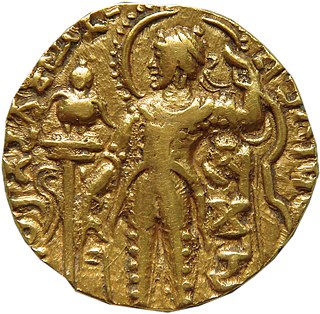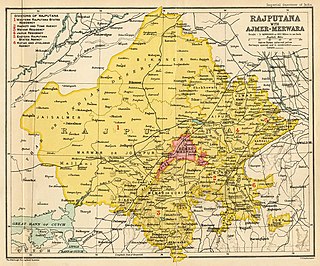Related Research Articles

Feudalism, also known as the feudal system, was the combination of the legal, economic, military, and cultural customs that flourished in Medieval Europe between the 9th and 15th centuries. Broadly defined, it was a way of structuring society around relationships that were derived from the holding of land in exchange for service or labor. Although it is derived from the Latin word feodum or feudum (fief), which was used during the Medieval period, the term feudalism and the system which it describes were not conceived of as a formal political system by the people who lived during the Middle Ages. The classic definition, by François-Louis Ganshof (1944), describes a set of reciprocal legal and military obligations which existed among the warrior nobility and revolved around the three key concepts of lords, vassals, and fiefs.

Manorialism, also known as the manor system or manorial system, was the method of land ownership in parts of Europe, notably England, during the Middle Ages. Its defining features included a large, sometimes fortified manor house in which the lord of the manor and his dependents lived and administered a rural estate, and a population of labourers who worked the surrounding land to support themselves and the lord. These labourers fulfilled their obligations with labour time or in-kind produce at first, and later by cash payment as commercial activity increased. Manorialism is sometimes included as part of the feudal system.

Serfdom was the status of many peasants under feudalism, specifically relating to manorialism, and similar systems. It was a condition of debt bondage and indentured servitude with similarities to and differences from slavery, which developed during the Late Antiquity and Early Middle Ages in Europe and lasted in some countries until the mid-19th century.

The Gupta Empire was an ancient Indian empire which existed from the early 4th century CE to late 6th century CE. At its zenith, from approximately 319 to 467 CE, it covered much of the Indian subcontinent. This period is considered as the Golden Age of India by historians. The ruling dynasty of the empire was founded by the king Sri Gupta; the most notable rulers of the dynasty were Chandragupta I, Samudragupta, and Chandragupta II, also known as Vikramaditya. The 5th-century CE Sanskrit poet Kalidasa credits the Guptas with having conquered about twenty-one kingdoms, both in and outside India, including the kingdoms of Parasikas, the Hunas, the Kambojas, tribes located in the west and east Oxus valleys, the Kinnaras, Kiratas, and others.

Samudragupta was a ruler of the Gupta Empire of Ancient India. As a son of the Gupta emperor Chandragupta I and the Lichchhavi princess Kumaradevi, he greatly expanded his dynasty's political power.

The Gupta script was used for writing Sanskrit and is associated with the Gupta Empire of India, which was a period of material prosperity and great religious and scientific developments. The Gupta script was descended from Brāhmī and gave rise to the Nāgarī, Śāradā and Siddhaṃ scripts. These scripts in turn gave rise to many of the most important scripts of India, including Devanāgarī, the Gurmukhī script for Punjabi, the Bengali-Assamese script and the Tibetan script.

A zamindar in the Indian subcontinent was an autonomous or semiautonomous ruler of a province who were originally known as bhumipatis.They accepted the suzerainty of the Emperor of Hindustan and were converted into zamindars by the Mughals and later the British. The term means land owner in Persian. Typically hereditary, zamindars held enormous tracts of land and control over their peasants, from whom they reserved the right to collect tax on behalf of imperial courts or for military purposes.

Indian feudalism refers to the feudal society that made up India's social structure until the Mughal Dynasty in the 1500s. The Guptas and the Kushans played a major role in the introduction and practice of feudalism in India, and are examples of the decline of an empire caused by feudalism.
Certain time periods have been named "golden ages" where development in India flourished. The period of Gupta rule between 300 and 600 CE has been called the Golden Age of India for its advances in science and emphasis on classical Indian art and literature. Gupta rulers acquired much of the land previously held by the Mauryan Empire, and peace and trade flourished under their rule

Rājputhana, meaning "Land of the Rajputs", was a region in South Asia that included mainly the present-day Indian state of Rajasthan, as well as parts of Madhya Pradesh and Gujarat, and some adjoining areas of Sindh in modern-day southern Pakistan.

Ram Sharan Sharma was an eminent historian and academic who specialized in the history of Ancient and early Medieval India following Marxist historiography. He taught at Patna University and Delhi University (1973–85) and was visiting faculty at University of Toronto (1965–1966). He also was a senior fellow at the School of Oriental and African Studies, University of London. He was a University Grants Commission National Fellow (1958–81) and the president of Indian History Congress in 1975. It was during his tenure as the dean of Delhi University's History Department that major expansion of the department took place in the 1970s. The creation of most of the positions in the department were the results of his efforts. He was the founding Chairman of the Indian Council of Historical Research (ICHR) and a historian of international repute.

Castes are rigid social groups characterized by hereditary transmission of life style, occupation and social status. The caste system in India has its origins in ancient India, and was transformed by various ruling elites in medieval, early-modern, and modern India, especially the Mughal Empire and the British Raj. The caste system consists of two different concepts, varna and jati, which may be regarded as different levels of analysis.

An Introduction to the Study of Indian History is a classic work of Indian historiography by Damodar Dharmananda Kosambi first published in 1956.
Pal, alternative form "Paul", is a common surname found in India and Bangladesh. It is traditionally believed that 'Pal' originated from the Sanskrit pala meaning protector or keeper. It is also occasionally found in other countries.
Feudalism in contemporary Pakistan usually refers to the power and influence of large landowning families, particularly through very large estates and in more remote areas. The adjective "feudal" in the context of Pakistan has been used to mean "a relatively small group of politically active and powerful landowners". "Feudal attitude" refers to "a combination of arrogance and entitlement". According to the Pakistan Institute of Labor Education and Research (PILER), five per cent of agricultural households in Pakistan own nearly two-thirds of Pakistan's farmland.

Anil Kumar Gupta is an Indian scholar in the area of grassroots innovations. He is the founder of the Honey Bee Network. He retired as a full-time professor at the Indian Institute of Management, Ahmedabad in 2017, where he served for about 36 years. He is a visiting faculty at the institute now. He held an executive vice-chair at the National Innovation Foundation, where he is a member of its governing board now. He is also a fellow of the World Academy of Art and Science. He was awarded the Padma Shri in 2004 for his contributions to management education.

Feudalism as practiced in the Kingdom of England during the medieval period was a state of human society that organized political and military leadership and force around a stratified formal structure based on land tenure. As a military defense and socio-economic paradigm designed to direct the wealth of the land to the king while it levied military troops to his causes, feudal society was ordered around relationships derived from the holding of land. Such landholdings are termed fiefdoms, traders, fiefs, or fees.

A Bengali Kayastha is a Bengali Hindu who is a member of the Kayastha community. The historical caste occupation of Kayasthas throughout India has been that of scribes, administrators, ministers and record-keepers; the Kayasthas in Bengal, along with Brahmins and Baidyas, are regarded among the three traditional higher castes that comprise the "upper layer of Hindu society." During the British Raj, the Bhadraloks of Bengal were drawn primarily, but not exclusively, from these three castes, who continue to maintain a collective hegemony in West Bengal.

Marxist historiography, or historical materialist historiography, is an influential school of historiography. The chief tenets of Marxist historiography include the centrality of social class, social relations of production in class-divided societies that struggle against each other, and economic constraints in determining historical outcomes. Marxist historians follow the tenets of the development of class-divided societies, especially modern capitalist ones.
Brahmadeya was tax free land gift either in form of single plot or whole villages donated to Brahmanas in the early medieval India. It was initially practiced by the ruling dynasties and was soon followed up by the chiefs, merchants, feudatories, etc. Brahmadeya was devised by the Brahmanical texts as the surest mean to achieve merit and destroy sin.
References
- ↑ Habib, Irfan (9 August 1997). "History and interpretation". Frontline. Archived from the original on 22 April 2009. Retrieved 5 April 2009.
{{cite news}}: CS1 maint: unfit URL (link)